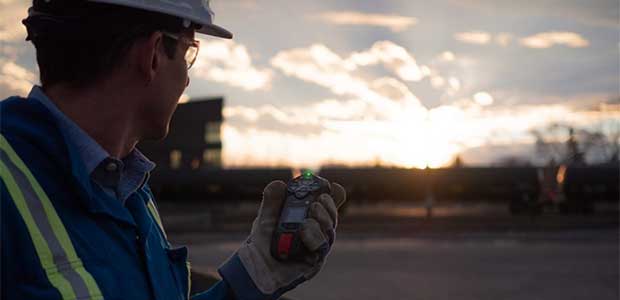
Improving Safety in Construction with Connected Technology
Real-time monitoring of conditions can protect workers and equipment from damage.
- By Brendon Cook
- Aug 01, 2022
The construction industry is consistently ranked as one of the most dangerous environments to work in around the world, with OSHA reporting that one in five deaths among U.S. workers occurs in the sector. And, according to the World Risk Poll, the second highest reported workplace injury rate globally (22 percent) was among those who worked in construction, manufacturing or production. In this high-risk context, accurate, real-time monitoring of safety conditions can protect workers and equipment from damage—ensuring everyone gets home safe and sound at the end of the day.
With the advent of digital transformation and Internet of Things (IoT), connected safety solutions have upleveled programs from simple reactive compliance to proactive incident prevention. The construction industry is seeing an evolution in safety, with improvements in equipment and wearable technology helping to push the industry forward and drive down the number of preventable injuries and deaths that occur each year. Connected safety solutions are the bedrock of this progress.
What is a Connected Safety Solution?
Connected safety solutions are comprised of a network of cloud-connected personal wearables that include an SOS button or latch, person-down detection, check-in request and even the option of gas detection. When coupled with an online dashboard, these devices provide full visibility into the safety of facilities and workers. The data streamed as they’re used deliver powerful reporting capabilities to a manager’s fingertips, such as real-time compliance status—ensuring employees are using equipment when required, plus testing and calibrating gas sensors when required. This information can be viewed from anywhere in real-time without the need to wait until after a device is docked to receive the data. Further data analysis can also identify and predict potential hazards so corrective action can be taken before they become incidents.
How do Connected Safety Solutions Reduce Risks to Workers?
The easiest way to explain the many benefits of connected safety is to walk through examples from the field. Here are some common risks that occur in the construction industry and details of how connected safety solutions can reduce them.
Connecting Workers Across the Site. A frequent scenario in construction is working at height—one of the largest contributors to occupational fatality statistics. As part of a connected safety solution, wearable devices feature sensors and functionality which automatically detect falls, lack of movement and missed check-ins, any of which could indicate that a worker needs assistance. This may be a scenario where a worker is wearing a harness with a fall-arrest system. If the worker falls, the fall-arrest device will engage to prevent injury from a sudden jerk at the end of the line, but the worker may still hit object on the way down or be left hanging on the line. A connected safety solution reduces the risk of the worker not being retrieved quickly. Similarly, the technology also benefits lone workers who may be spread across a large construction site with limited contact and out of view of other people.
This article originally appeared in the July/August 2022 issue of Occupational Health & Safety.